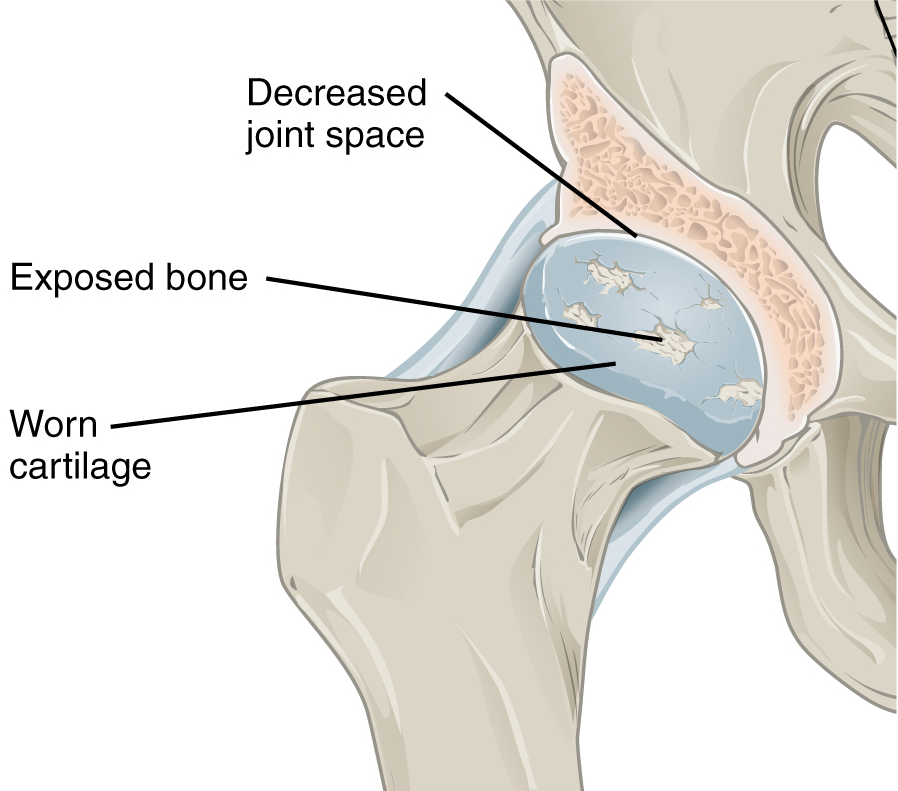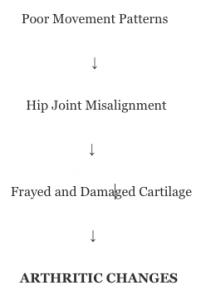Arthritis of the hip is a common condition physical therapists see in the clinic. It is diagnosed most frequently in patients over 60 years of age and is caused by damage to the joint’s cartilage. Actually, this bone and cartilage relationship starts much earlier, in your 20s and 30s, but comes into focus only once the joint damage is defined by pain. Running, skiing, sitting – all these movements add up to your arthritic pain in the long run.


It is important to recognize that some arthritis is natural with aging. You accelerate the arthritic process by a combination of factors, and improper movement is a major contributor.
Healthy movement quality differentiates “pain free” and the “painful” individuals with arthritis.
We’ve come up with self-diagnosis standards to determine if you have hip arthritis. These will also help determine if you are a good candidate for physical therapy treatment:
1. You have moderate front or side hip pain during weight-bearing activities
2. You have morning hip stiffness for less than 1 hour
3. You have much less hip motion compared to the other side
New practice guidelines from the Journal of Orthopedic and Sports Physical Therapy suggests that exercising at your pain-free capacity reduces pain and increases physical function compared to doing no exercise at all. To refer to our earlier analogy, exercise and pain-free movement are the lubrication for your joint’s engine. Because arthritis attacks different portions of the hip joint, your physical
therapist can pinpoint which muscles initiate your hip pain. Whether it’s an infrequent twinge during yoga, or debilitating deep groin pain with stairs – your tailored plan of action will include manual hands-
on treatment along with specific exercises to best address your hip pain. Our goal at Heather Lane Physical Therapy is to enhance your life and get you back to full activity.
Citation:
Krauß I, Steinhilber B, Haupt G, Miller R, Martus P, Janßen P. Exercise therapy in hip osteoarthritis: a randomized controlled trial. Dtsch Arztebl Int. 2014;111:592-599. https://doi.org/10.3238/arztebl.2014.0592
J Orthop Sports Phys Ther. 2017;47(6):A1-A37. doi:10.2519/jospt.2017.0301
The information provided on this site is intended for your general knowledge only and is not a substitute for professional medical advice or treatment for specific medical conditions. You should not use this information to diagnose or treat a health problem or disease without consulting with a qualified healthcare provider.



